Presentation
Abdominopelvic pain and progressive distension.
Patient Data
Age: 45 years
Gender: Female
From the case:
Bilateral ovarian serous cystadenocarcinoma
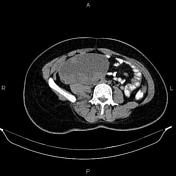

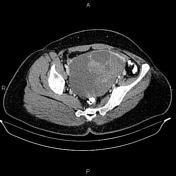



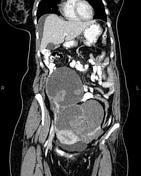

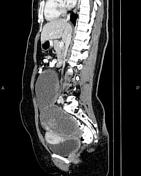

Download
Info
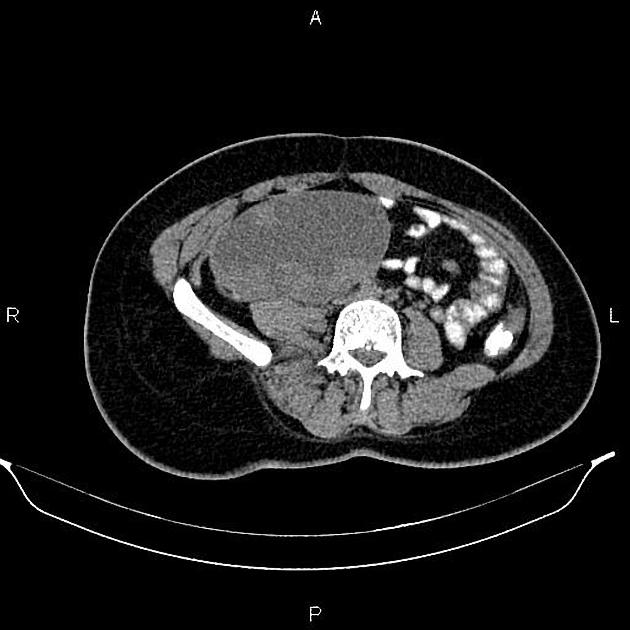
Huge cystic masses with enhancing solid components are present in the pelvis bilaterally, extending superiorly until the kidneys' level. The ovaries couldn't be defined separately from than mentioned lesions.
The uterus contains a few small fibroids.
Mild ascites are present.
Case Discussion
Pathology proved bilateral ovarian serous cystadenocarcinoma, the malignant form of ovarian serous tumor, the most common type of ovarian epithelial tumor, and the most common type of ovarian malignancy.




 Unable to process the form. Check for errors and try again.
Unable to process the form. Check for errors and try again.